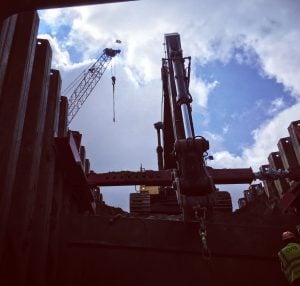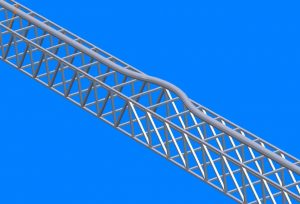It is suggested that safety in the industrial sector of the construction market is safer than the commercial sector which is safer than the residential market. Is this true? How can it be true? After all, don’t the same safety standards apply to all construction? If experience has anything to do with it, it appears that many of the safety advances that are commonplace today were born in the industrial workplace. This is particularly true with regards to scaffolding. If this perception is accurate, then what is it that makes the industrial sector safer than other sectors?
It is my opinion that scaffold safety involves hardware and habits. The hardware includes the scaffold components, fall protection devices, ladders, and other products that facilitate and enhance the habits (or actions) of the employee. The hardware cannot operate separate from the habits of the employee although the habits of the employee can function separate from the hardware. For example, personal fall protection, such as a harness, is useless without the employee’s body wearing and using it. On the other hand, an employee can function without the harness, however unsafe that may be. Because of this, the employee must be encouraged to utilize the hardware so that safety is enhanced. The industrial market, specifically refineries, chemical plants, and power plants, seized the initiative many years ago and demanded safety habits that went beyond the industry norm. Specifically, employees using and erecting scaffolds were required to utilize personal fall protection equipment, only trained employees were allowed to erect and modify scaffolding, and a tagging system was initiated to provide some indication of the status of scaffolds.
It can be argued that the controls seen at the typical industrial site are easy to institute compared to a commercial site. Oftentimes the industrial site owner is directly involved in the safety process and is willing to compensate the employer for enhanced safety procedures. Frequently the scaffold erector has been to the site before, and in some cases never leaves the site. Familiarity with the surroundings and knowledge of the specific jobsite requirements, learned over a considerable time frame, are certainly valid arguments for increased safety compared to the newness of a new high rise building that changes shape and size every day. But just a minute; ask anybody on an industrial site about the potential for serious injury or death and they’ll tell you in no uncertain terms that the exposure is just as high as a commercial site. So is there a difference?
Yes and no. The opportunity for an employee to get maimed or killed exists no matter what the construction site is. As far as I’m concerned, it’s the approach to safety that makes the difference. Oil companies have very specific rules and procedures to minimize the injury risk. These procedures have developed over time and are continually modified and improved as more data and experience are developed. Commercial contractors and owners can learn much from this work. No doubt there are many general contractors who have developed effective safety programs. Unfortunately the effectiveness of the program drops dramatically as the procedures are applied to subcontractors and sub-subcontractors. Herein lies the problem. Certain commercial employers choose not to grasp the significance or magnitude of the safety issues. They need to take a cue from the industrial market. It seems the residential market is at the bottom of the scale. And this shouldn’t be a surprise. The employees receive less training, have less experience, and maintain poorer habits. We have a tendency to throw hardware at the problem and find that the result is still the same; the employee still gets hurt. What’s the secret? Look at the industrial segment. Training, experience, habitual and incessant focus on safety, and a substantial enforcement incentive produce much better results while applying the same safety standards.
This is not to say that the industrial sector cannot be improved. The Scaffold Industry Association Training Program (SIATP) has developed a customized Industrial Training Program that specifically applies to employees involved with scaffolding in that market. If you’re in that market, avail yourself to that training; who knows, your habits may need adjustment. If you are in other markets, the SIATP has programs that will help you and your habits.
Remember, the rules are the same and they should be applied the same. Safety on industrial, commercial, and residential jobsites is the same. It’s the habits that make the difference. It is your habits that make the difference.













